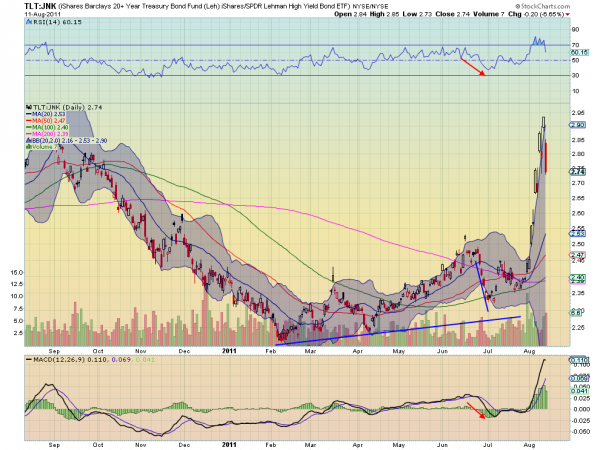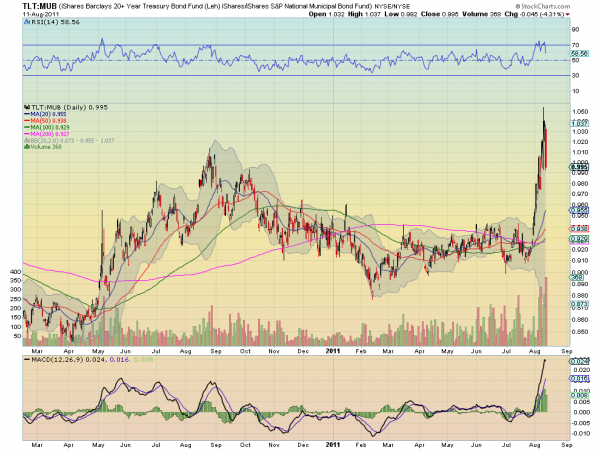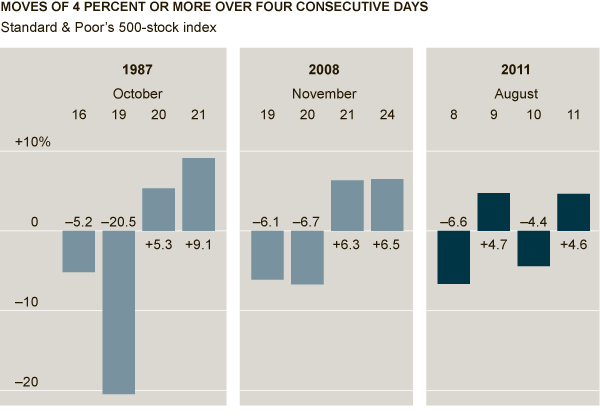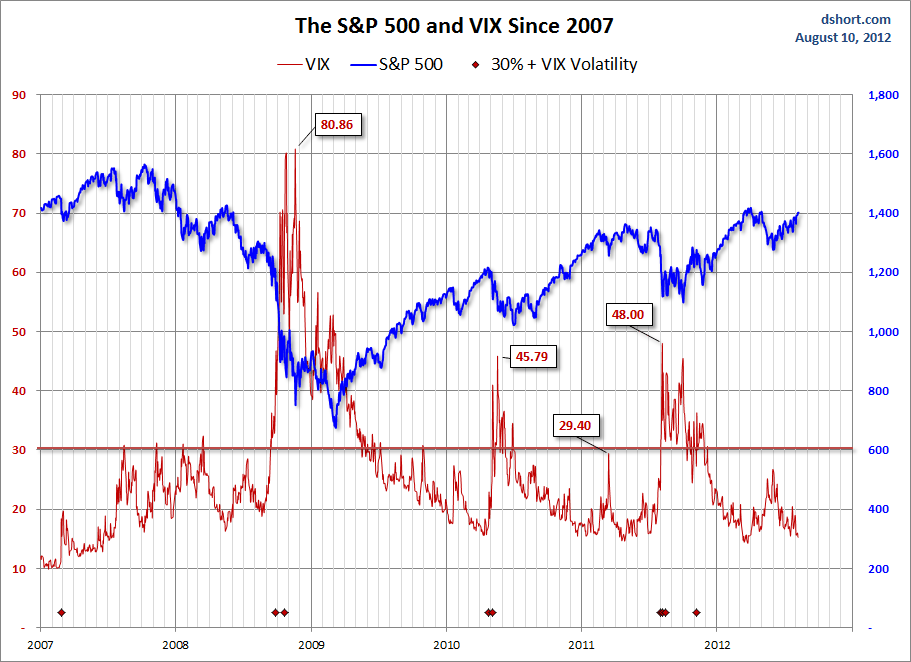TIME IS ON YOUR SIDE
“Time is on my side, yes it is…You’ll come runnin’ back, you’ll come runnin’ back, you’ll come runnin’ back to me.” ~Rolling Stones

Who would have thought that The Stones were cutting edge advocates of selling options? After all these years, it finally dawned on me that Mick and Keith devoted this song to the propensity for option prices to “run” back to their strike price, and eventually expire worthless. Of course, they were also telling people to “get off their cloud” well before cloud computing became the newest rage.
The purpose of this article is to acquaint the reader with one of the elements used to price options-time. In a way, this component would seem to be intuitively simple. Perhaps the reason for the perceived simplicity is that many are familiar with the traditional real estate option. Generally, the plain vanilla real estate option creates a contract where a property owner will, for a fee, grant a potential buyer an option to buy subject property for a set price, within a stated time period. It is anticipated that the price of the option will vary, and the chief determinant of that variation is time. This aspect is readily understood, as an owner of property will refuse to encumber his property, unless adequate consideration is paid to compensate for a given time interval. And, as everyone knows, if the option is not exercised, the property owner will pocket the option money.
In the typical real estate scenario, the buyer probably has a legitimate interest in buying the property. But, during real estate bubbles, the buyer may want to “flip” the option to someone else and collect a fee for selling the option. Whatever the circumstance, if one were asked to ‘value’ the subject option on a daily basis, the value ascertained would no doubt reflect a linear amortization. Thus, the stated price of the option, divided by the number of days in the option period, would yield a daily value. On any given day, the preceding day represents a value proportionately greater than the next day, and so on. So, the tick of the clock and the passage of days are quite predictable, as the option decays in linear fashion. We can conclude that there is absolutely no ‘sensitivity’ to any external event. Suppose that on the morning of the last day of the option contract, developer announces major development plans for the immediate area. The announcement causes real estate values to skyrocket in the surrounding area, including the subject property.
In order to put time on our side we must understand risk and the concept of mathematical expectancy. In the above real estate example, we altered the facts to allow for a spike in value. In the final analysiseven the simple real estate option isn’t linear in reality- although, for accounting purposes, linear amortization is the norm. Suppose that a mere rumor surfaced about the development, as opposed to a definitive announcement. Or, to take another perspective, assume that the subject property was suddenly re-zoned in such a way as to lower its present value.
HICKORY DICKORY DOCK – OPTION TRADERS BET ON THE CLOCK
Both the buyer and seller of an option are betting on the clock. The buyer of an option wants enough time for the option to gain more than he paid for it. On the other hand, the seller hopes to simply run out the clock. In short, the option seller is betting on either a static or decaying universe. (As an interesting aside, the Second Law of Thermodynamics gives the edge to decay, or entropy). In any event, however, time transforms and shapes risk. The game will always begin at a point defined as ‘now’, and continue until some specified date in the future.
As to the subject of options, studies show that most options expire worthless. There is some debate as to the exact percentage, as well as the assessment methodology, but even a conservative number indicates an expiration ratio of some seventy percent. If a casino is perfectly happy with a winning ratio of fifty-one percent, a ratio approaching even the most conservative option expiration estimate would make for some very happy casino owners.
THE DAYS OF OUR LIVES
“Like sands through the hour glass, so are the days of our lives.” MacDonald Carey

Mr Carey probably had options on his mind, as he so elegantly and poignantly spoke those words for so many years. In dealing with the concept of time via option risk, we must change our perception of the speed at which the grains of sand flow through our ‘hourglass.’ Specifically, while we know that a 30 day option must expire on or before the clock runs out, the sand can actually accelerate or even recapture some grains before the ultimate result.
Imagine a giant warehouse, full of thousands upon thousands of clocks. All of these clocks are set to sound their alarm at precisely the same time. But, to an observer, something is terribly inconsistent. It appears that every clock is either too fast or too slow to possibly chime in unison at the specified time. Yet, we know that all of the thousands of clocks will converge, finally sounding a cacophony of chimes-at the precise moment. If we had an ‘hourglass’ that was converted to a thirty day structure, we could go away for the requisite time period and return to find that all of the sand had filtered from the top portion of our massive time piece, to the bottom. Supposethat we left a video camera to record the second-by second movement of the sand. What a strange and curious video we would encounter.
Even though the ‘days of our lives’ run on a strictly linear process, our time-piece is non-linear, as are the thousands of clocks in our warehouse. Thus time is somewhat of an illusion when we suspend the rules of linearity. Of course, as The Guess Who emphatically state, when there is no more time, there truly is no more time. Sothe game will end at the buzzer, as expected, and all clocks will chime in final harmony. It can be said that we perceive ‘time distortion’ thru the relative position of volatility. At various points along our thirty day time journey, it will seem that we travel at different speeds. At times, it appears that we walk in slow motion, and at other times, we travel on a rocket. But, despite our own particular clock or mode of travel, we can never completely reach our destination ahead of time. On the other hand, we are allowed to freeze our clock or cut our trip short.
NOT EVEN THE ROCKS LIVE FOREVER
A pessimist might point out that we begin to die at birth. It is certainly the case though; that an option will begin to die at the moment it is contracted. It should come as no surprise that there is a precise mathematical equation that reflects this fundamental law. In fact, Fischer Black and Myron Scholes brought a mathematical approach to options pricing in 1973, with the publication of their seminal piece in
‘The Journal of Political Economy.’ Robert Merton extended the model, and a Nobel Prize in Economic Services was awarded in 1997 for their efforts. Of course, genius alone is no defense against an often bewildering market, as evidenced by Merton and Scholes’ links to the
Long-Term Capital Management debacle.
And, I’ve known math doctorates that can pontificate on options pricing methodology, but who somehow can’t seem to parlay that knowledge base into profitable trading strategies. So, just as some truly great musicians can play by ‘ear,’ so it is that one can become a very successful options trader, without possessing a strong mathematical background. Perhaps, the best advice is given by Jesse Livermore, as reflected more recently by Paul Tudor Jones:
“…I am leery of traders who have never lost it all. I think that intense feeling of desperation that accompanies such a horrifically deflating experience indelibly cauterizes great risk management reflexes into a trader’s very being.”

With that admonition in mind, the more mathematically inclined might read the appropriate sections dealing with the concept of ‘theta,’ in
“Applied Math for Derivatives,” by John S. Martin. (See in particular pages 337-40/Sec. 12.5.4). The author provides the equation for calculating decay, and provides illustrations, including graphs, depicting the non-linear aspects relative to option decay). Of course, there are any numbers of option text-books that discuss this subject.
My suggestion is that you get a “feel” for non-linear decay by selling a covered call against 100 shares of stock that you own. If that isn’t viable at the moment, pretend that you either buy or sell a call of a stock that interests you, and carefully study the theta-and total value-of that option for thirty days. Draw an intraday graph, and save your coordinates to plot on a thirty day chart. At the end of that time, compare your project with a graphical illustration in an options textbook. Again, theta is the term used to describe the time decay associated with option decay. Theta is presented as a negative number, such as -.25, which simply means that an option contract with said theta will decay at a rate of .25 per day. The rate of decay is a function of the square root of the option. So, the rate of decay, as we’ve noted, is not linear. As one might intuitively expect, a longer-dated option decays at a slower rate than an option set to expire in two weeks.
Please remember, though, that you are attempting to isolate one component, for study purposes, and that interim fluctuations in the total price of the option will be a function of all the variables in the pricing model. In other words, you are attempting to learn about how the liver works, while recognizing that the other organs in the body are just as vital.
THETA MANAGEMENT AND COMMON MISPERCEPTIONS
It’s probably reasonable to assume that most people, and particularly those with a degree of market experience, realize that time and risk are intimately related. Increased time in the markets translates to a greater degree of risk. Of course, market risk can be hedged.
But, given what we know about option decay, are there more refined ways to think about the design and implementation of optimal strategies? Can we actually apply some of the traditional concepts of game theory to portfolio or trading management?
This is a complex-and provocative-topic, and only a cursory perspective is offered at this point- given time and space limitations, but feel free to ask questions in the comment section below . But let’s begin by addressing an extraordinary fallacy that appears repeatedly in various financial blogs and articles. These articles are not academic papers by any means, but nonetheless, they probably do substantial damage to traders and investors. The fallacy referred to is actually a mixture of ‘post hoc’ homilies and inadequate training/experience of numerous financial pundits.
These fallacies include:
- The selling of an option is a one-dimensional process by which the seller of a given option is “locked” into the results flowing there from;
- Option pricing methodology invariably creates a so-called “zero-sum” event.
These are two quite superficial-and distorted comments that appear time and again when options are discussed, if not maligned-particularly by non-experts in the field. The above are somewhat interrelated. So, are options really a zero-sum proposition?
I think it more precise to simply state that there is an approximate symmetry, but only within an initial one-plane dimension. A zero-sum result is a consequence of staying within this one-dimensional plane. In the option universe, multiple dimensions exist. There are other reasons to discount the zero-sum perspective, which are beyond the scope and purpose of this article. However, if you realize that, in reality, the so-called ‘person’ on the other side of your option transaction is little more than a fiction, you begin to understand the real game.
The other person at the moment of this mythical transaction, is a computer ledger. The market maker must accept your bet and hedge accordingly. As an example, if you take $100 cash and deposit it in your checking account, does that mean that said $100 resides in your account? Of course not! Just as your bank deposit does not reflect the exact physical currency initially entrusted by you, so it is with any type of currency exchange. The real estate contract of purchase and sale, which is often used to explain options, is, as we noted previously, terribly misleading.

Complex option strategies form patterns and structures that change from moment to moment. Yet, in a complex, bounded structure, we may observe patterns that are orderly in space and disorderly in time and others orderly in time and disorderly in space. And because options are derivative instruments, virtually all patterns constitute a set of “Russian dolls”- that is to say, we expect to find fractals. Volatility, much like heat in relation to the boiling point of water, will represent a zone from a steady state (except for time decay), to a pattern that oscillates within the prescribed boundary. This boundary is pre-determined by the strategist. All points within the strategy set, and the impact thereof, are confined within this zone. Knowing the boundary limits allows for fine-tuning. It is the fine-tuning or adjustment alternatives, deployed at the right time, which can create a differential advantage over forces that appear random.
FINAL THOUGHTS
If we are short an option, we are not locked in to an unwanted assignment, should the market not be in our favor as expiration approaches. An option can be ‘reset’ much as one can turn over an hourglass, and the game can continue-so the concept of expiration is highly misleading, and compels the novice to abandon positions at a loss. In theory, the game has no end, and I’ve seen documented records where one persistent trader rolled out of a position for 2 1/2 years-finally winning the game. One way of thinking about this is to realize that a short option can always be reincarnated, whereas a long option, as it decays, will vanish from the universe forever.
Bear in mind that the purchase of an uncovered long option requires that an event occur. The seller of an option, as noted above, wants nothing to happen. In that regard, note as follows:
- Buying an option requires one to know something the market doesn’t i.e. otherwise the market has presumably determined the correct price (e.g. merger, earnings surprise, etc.)
- Buying an option also requires an informed opinion as to the elements that determine the price of said option, especially implied volatility (the value of an option can actually decrease even where the stock moves up).













